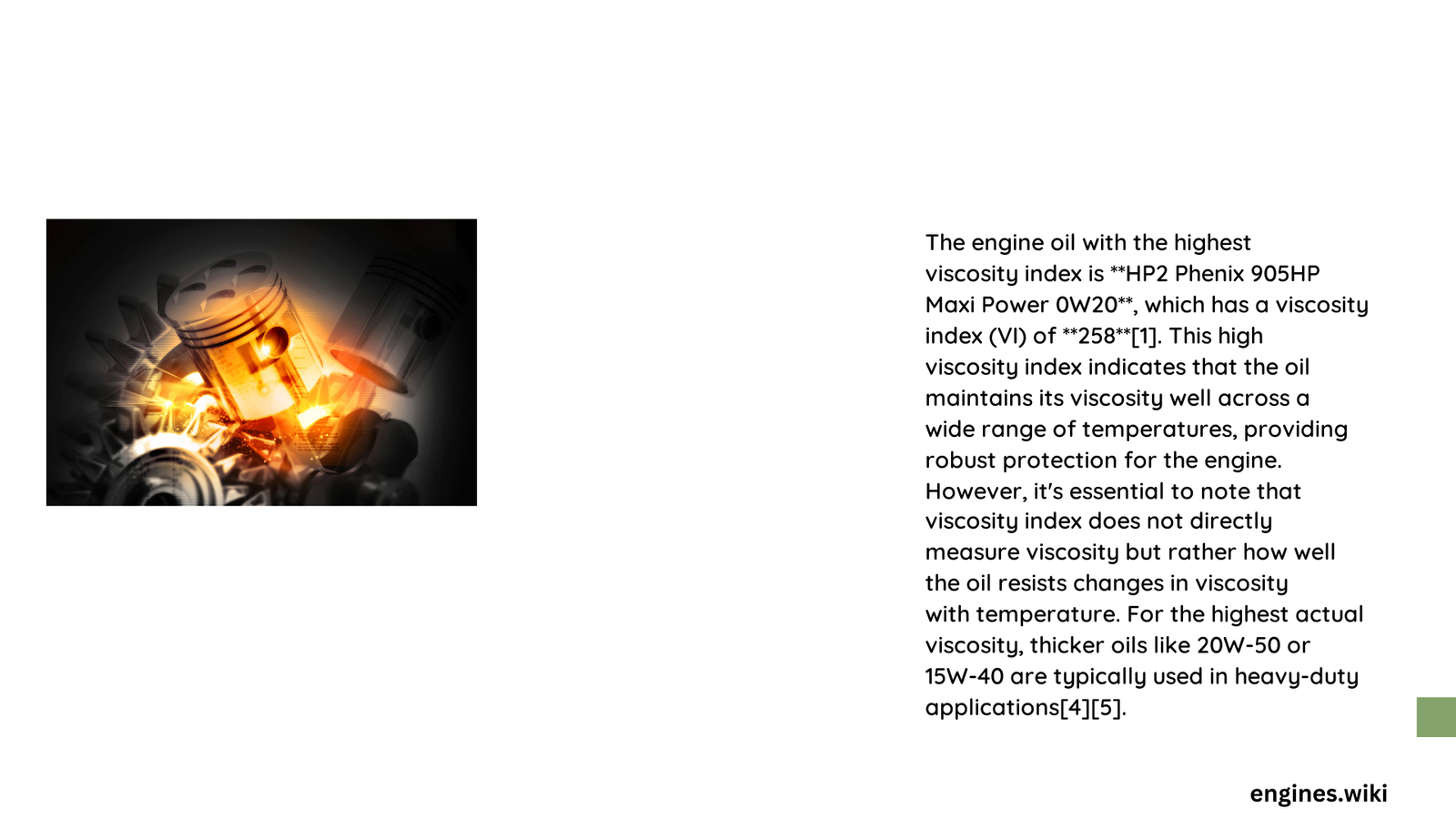Engine oils with high viscosity provide exceptional protection in extreme temperatures and high-stress environments. Among the most viscous engine oils, 10W-60 stands out as the highest viscosity option, offering superior film strength and protection for high-performance engines operating under intense conditions. This comprehensive guide explores the nuanced world of high viscosity motor oils, their characteristics, and critical applications.
What Determines Engine Oil Viscosity?
Viscosity represents an oil’s resistance to flow and is measured using the SAE (Society of Automotive Engineers) rating system. The rating consists of two critical numbers:
- Winter Rating (Before W): Indicates oil’s performance in cold temperatures
- High-Temperature Rating (After W): Represents oil’s thickness at operating temperatures
Viscosity Comparison Chart
| Oil Grade | Low-Temperature Performance | High-Temperature Viscosity |
|---|---|---|
| 10W-60 | Moderate | Highest |
| 20W-50 | Good | High |
| 15W-50 | Better | Moderate-High |
Why Does 10W-60 Represent the Highest Viscosity?

10W-60 engine oil demonstrates the highest viscosity due to several key characteristics:
- Extreme Temperature Resistance
- Maintains superior film strength at high temperatures
- Provides maximum protection in high-stress environments
-
Ideal for racing and high-performance engines
-
Viscosity at 100°C
- Typically ranges between 25-30 centipoise (cP)
- Significantly thicker compared to other multi-grade oils
- Offers maximum engine component protection
Where Are High Viscosity Oils Most Effective?
High viscosity oils like 10W-60 excel in specific applications:
- Racing Engines
- Heavy-Duty Industrial Equipment
- High-Performance Vehicles
- Engines Operating in Extreme Heat
Factors Influencing Oil Viscosity Selection
Performance Considerations
- Engine Design: Tight vs. loose clearances
- Operating Temperature Range
- Manufacturer Recommendations
- Driving Conditions
Cost and Accessibility
- Price Range: 10W-60 oils typically cost 15-25% more than standard grades
- Availability: Widely available from major manufacturers
- Specialized Formulations: Premium pricing for advanced compositions
Potential Drawbacks of High Viscosity Oils
While 10W-60 offers exceptional protection, potential limitations include:
- Increased frictional drag
- Reduced fuel efficiency
- Not optimal for cold-start environments
- Higher manufacturing costs
Expert Recommendations
Professional mechanics and automotive engineers suggest:
- Always consult vehicle manufacturer specifications
- Consider your specific driving conditions
- Balance protection with performance requirements
- Regularly monitor oil condition and change intervals
Technical Insights
The molecular structure of 10W-60 oils includes advanced additives that:
– Enhance film strength
– Provide superior thermal stability
– Reduce engine wear under extreme conditions
Key Takeaway
10W-60 represents the engine oil with the highest viscosity, offering unparalleled protection in high-stress, high-temperature environments.
Final Thoughts
Selecting the right engine oil involves understanding your vehicle’s unique requirements and operating conditions. While 10W-60 offers the highest viscosity, it may not be suitable for every application.
Practical Advice
- Consult your vehicle’s manual
- Consider professional consultation
- Prioritize manufacturer recommendations
References:
1. Society of Automotive Engineers
2. Castrol Technical Resources
3. Motor Oil Technical Specifications
